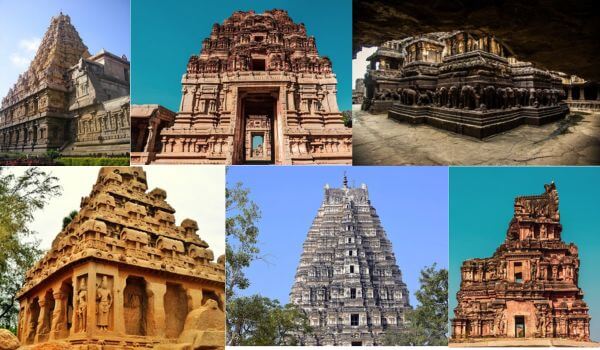Temple architecture in India reflects the country's diverse religious beliefs, artistic prowess, and historical significance. These monumental structures are not merely places of worship; they are repositories of history, culture, and tradition, telling the story of India's spiritual journey.
India's rich cultural heritage is embodied in its temples, which stand as not only spiritual centers but also architectural marvels that have evolved over centuries. Let's explore further
Early Temple Architecture
The roots of temple architecture trace back to prehistoric and proto-historic times when religious practices were centered around natural caves and rudimentary rock-cut shrines. As communities evolved, so did the architecture, with wooden and thatch structures being introduced to house deities and facilitate worship.
Classical Temple Architecture
The classical era marked a turning point in temple architecture, witnessing the emergence of distinct regional styles. The Nagara style of North India, characterized by its curvilinear spires and sanctum sanctorum, contrasted the Dravida style of the South, known for its towering gopurams and intricately carved structures. These temples showcased the profound influence of Hindu, Buddhist, and Jain architectural principles.
Also Read: Research team and University of South Florida students made new discovery in Malta
Pallava and Chola Dynasties
The Pallava dynasty contributed intricate stone carvings and structural innovations. However, it was the Chola dynasty that elevated temple architecture to unprecedented heights. Chola temples displayed intricate artwork, innovative construction techniques, and an undeniable link between architecture, royalty, and devotion.
Hindu Temple Architecture
Hindu temple architecture embodies symbolism and cosmology, evident in the layout and sculptures. The evolution of spire (shikhara) and tower (gopuram) designs showcases a journey from simplicity to complexity, with sculptures depicting deities, epics, and daily life, narrating stories beyond words.
Dravidian vs. Nagara Styles
The Dravida and Nagara styles illustrate regional diversity. The Nagara style's towering temples symbolized spiritual elevation, while the Dravida style emphasized grand entrances and intricate carvings. These contrasting styles adapted to the diverse landscapes of India.
Hoysala and Vijayanagara Contributions
The Hoysala dynasty introduced star-shaped temples adorned with delicate carvings that demonstrated their architectural finesse. The Vijayanagara Empire left an indelible mark with grand complexes like Hampi, highlighting a blend of religion, culture, and artistry.
Islamic Influence
The medieval period saw architectural synthesis under Islamic rulers. Islamic elements like arches, domes, and minarets influenced temple structures. This period stands as a testament to India's ability to harmoniously blend diverse architectural styles.
With the advent of Islamic rulers in India, temple architecture underwent further evolution. The Mughal period witnessed the fusion of Islamic and indigenous architectural elements, as seen in the Akbari and Mughal architectural styles.
The Dilwara Temples in Mount Abu are a remarkable example of this synthesis. The Deccan Sultanates also contributed to this evolution, with the Gol Gumbaz in Bijapur being an iconic monument.
Maratha and Rajput Temples
The post-medieval era showcased the Maratha and Rajput styles, characterized by regional influences and artistic originality. These temples became focal points for community gatherings and cultural expression.
Colonial and Modern Era
The colonial era introduced European architectural influences to India. Neo-Gothic and Indo-Saracenic styles emerged, blending Western and Indian architectural elements. The Victoria Memorial in Kolkata is a prime example of this fusion.
Meanwhile, modern temple architecture often incorporates traditional elements while embracing contemporary designs and materials
Temple Conservation and Heritage
Preserving ancient temples presents challenges, but initiatives strive to protect these cultural treasures. Several temple complexes have gained recognition as UNESCO World Heritage Sites, underlining their global significance.
Conclusion
The evolution of temple architecture in India is a reflection of the nation's spiritual and artistic journey. From humble rock-cut caves to towering gopurams, from the tranquility of the sanctum sanctorum to the grandeur of intricate carvings, each era has contributed to the diverse tapestry of temple architecture.
These temples not only stand as spiritual landmarks but also as timeless architectural masterpieces that connect the past, present, and future of India's cultural identity. As we continue to appreciate and preserve these treasures, we ensure that the legacy of India's temple architecture lives on for generations to come.






0 Comments